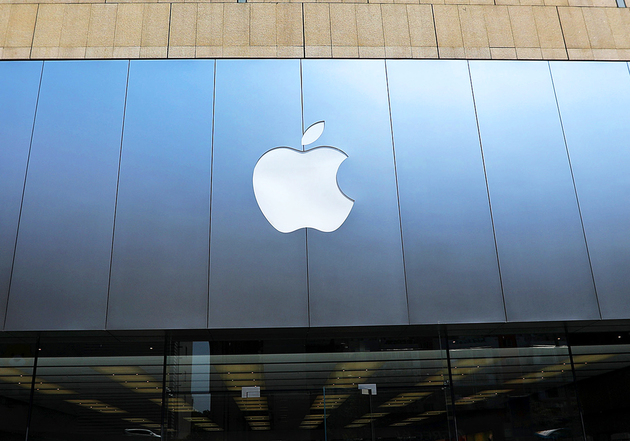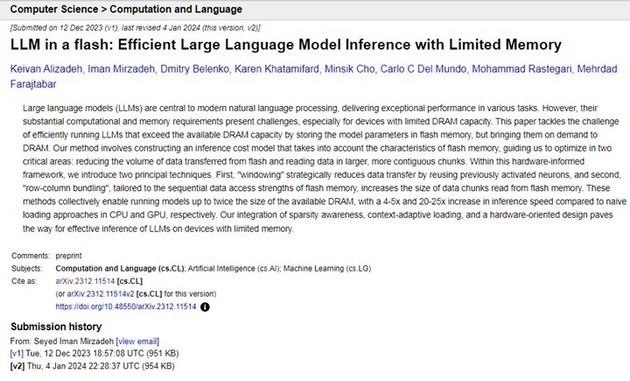
Photo/Zhang Jian (NBD)
On February 28th, at Apple’s annual shareholder meeting, CEO Tim Cook revealed: “Later this year, I look forward to sharing with you how we will break new ground in generative AI. We believe this technology can redefine the future.”
This is the strongest signal yet of Apple's embrace of the generative AI trend, causing a stir in the industry. A day earlier, Bloomberg reported that Apple’s decade-long dream of the “Titan Project” was coming to an end, with some of the nearly 2,000 employees on the project being reassigned to generative AI projects. This is another testament to Apple’s full-fledged sprint into the AI field.
At the shareholder meeting, Cook did not disclose when the company's AI progress would be announced, but industry speculation suggests that Apple may choose to announce it at the Worldwide Developers Conference held in June this year.
Apple has always been a "bystander" in the face of the booming generative AI wave, with minimal action and low presence. But in reality, Apple is not without ambition in the AI field. The company has made multi-dimensional investments, including frameworks, hardware procurement, and internal AI models. Moreover, as of 2023, Apple has acquired over 30 AI startups.
However, since the launch of ChatGPT, the generative AI field has become a battleground for tech companies like OpenAI, Google, Microsoft, and Amazon. Even if Apple shifts its strategic focus to AI, how can it catch up with its competitors?
NBD noticed that in December 2023, Apple researchers published a research paper that might give a glimpse into Apple’s AI strategy - embedding native AI models into existing devices.
Dan Ives, Managing Director of WedBush Securities in the US, predicted in an email sent to NBD, “We also believe Apple will incorporate generative AI into iPhone 16 and this will mark the start of a new frontier of growth for the golden installed base of Cupertino. "
Apple’s AI Strategy
At Apple’s annual shareholder meeting, Cook did not reveal Apple’s AI progress, but he stated that devices currently using Apple’s AI technology include Vision Pro (hand tracking) and Apple Watch (heart rate alerts). He also claimed that every Mac using an Apple chip is an extraordinarily powerful AI machine, and there is no computer on the market more suitable for AI.
However, the capital market has not shown much interest in Cook’s inclination towards generative AI. On the day of the shareholder meeting, Apple’s stock price fell by 0.89% at the close.
In fact, although Apple appears to be an “outsider” in the generative AI competition, it does not mean that it has made no achievements.
NBD noticed that before this clear signal of increased investment, Apple already had quite a few layouts in the AI field, investing or researching AI in multiple aspects, including hardware procurement, internal AI model building, and researching how to run AI on small devices.
As early as June 2017, Apple announced the CoreML framework. CoreML aims to deploy pre-trained AI models to various applications on Apple devices. Foreign media believe that this was Apple’s initial path to passively participate in generative AI.
The launch of the open-source array framework MLX, which is specifically used for machine learning on Apple chips, represents Apple’s attitude shift from passive participation to active development. MLX, released last December, is designed for machine learning researchers and aims to effectively train and deploy AI models. This to some extent indicates the company’s ambition for generative AI.
In terms of large language models, in July of last year, Bloomberg had revealed that Apple had established a large language model framework “Ajax”, and based on Ajax, it created a chatbot service, which some engineers called “Apple GPT”. In October of last year, Apple co-developed a multi-modal AI model, Ferret, with researchers from Cornell University.
In addition to building AI frameworks and basic models, NBD noticed that Apple is working with external partners to advance the open-source capabilities of generative AI. At the same time, Apple is also actively purchasing chips at a high cost.
TF Securities tech industry analyst Ming-Chu Kuo says ta survey indicates that Apple has plans to purchase 2,000–3,000 units of AI servers in 2023 and 18,000–20,000 units in 2024. He says Apple will account for about 1.3% and 5% of global AI server shipments in 2023 and 2024, respectively. Kuo expects Apple to spend "at least" $620 million on servers in 2023 and $4.75 billion on servers in 2024.
On the other hand, Apple is said to be “far ahead” in acquiring AI startups. According to reports, as of 2023, Apple has acquired as many as 32 AI startups, ranking first among tech giants. According to the latest foreign media reports, Apple plans to acquire the German AI startup Brighter AI this year to build a larger generative AI dataset.
Edith Reads, a financial analyst at Stocklytics, stated that by acquiring promising AI startups, Apple has gained top talent and core innovative technologies. Apple’s investment strategy highlights its focus in the AI field, including AI talent, key technologies, and intellectual property rights.
Last year, well-known tech reporter Mark Gurman revealed that Apple executives were caught off guard by the sudden AI craze in the industry and have been busy making up for lost time since the end of 2022. From the aforementioned layout, it is clear that Apple is accelerating its efforts to catch up with its competitors. After falling behind for a while, Apple is no longer willing to be just an “observer”.
Apple’s AI Path: Embedding AI into Existing Devices
Despite Apple’s existing layout in the AI field, the generative AI domain is already surrounded by strong competitors. Leading companies like OpenAI have made their mark, first with the strong emergence of ChatGPT, and then at the beginning of this year, they made a strong presence in the tech circle with the Sora video technology. Other tech giants such as Google, Microsoft, and Amazon are also increasing their investments in generative AI.
So, how does Apple plan to break through in such an environment?
NBD noticed that in December 2023, Apple researchers published a research paper on a preprint website titled “LLM in a flash: Efficient Large Language Model Inference with Limited Memory”. The paper mentions that Apple has been committed to solving the challenge of running large generative AI models on devices with limited memory. The research method involves using flash memory commonly found in mobile devices, rather than traditional RAM, to store neural network AI models.

Photo/arxiv.org
From this article, we can perhaps glimpse the path of Apple’s AI development, which is to embed native AI models into existing Apple devices.
Dan Ives, the Managing Director of WedBush Securities in the United States, also predicted in an email sent to the reporters of NBD that “We also believe Apple will incorporate generative AI into iPhone 16 and this will mark the start of a new frontier of growth for the golden installed base of Cupertino.”
Ulrik Stig Hansen, president and co-founder of London-based generative A.I. firm Encord, said in an interview with Fortune that they believe that “Apple has a huge distribution advantage over other A.I. research companies.” “It’s a no-brainer for them—especially if they can bundle it with their existing iCloud services already used by hundreds of millions of consumers.”
Based on this, the foreign media Techopedia speculated on the potential use cases of AI in the Apple ecosystem.
Techopedia believes that We have yet to see mobile use of AI take off outside of some generative apps, some tentative steps by Samsung, and mobile access to tools like ChatGPT.
In addition to embedding native AI models into the iPhone, many tech media and industry insiders believe that the smart head display device, Vision Pro, also carries Apple’s AI ambitions.
Apple’s focus appears to be on everyday device integration, and if this is a problem they can solve within the next few years, we may see AI take another leap forward in everyday adoption.
Dan Ives told NBD “For Apple the ultimate goal in our opinion is that Vision Pro will work alongside the iPhone and other Apple devices over the coming years with many consumer AI use cases set to explode across health, fitness, sports content, and autonomous.In our view Vision Pro is the first step to Apple pushing into AI and eventually a separate AI App Store. ”
Interestingly, in 2015, Apple launched an AR/VR project codenamed T288. This project was almost parallel to the electric vehicle project “Titan Plan”, but unlike the latter, the product of T288 successfully launched this year, which is Vision Pro.
Some comments suggest that after abandoning the car project, Apple is more optimistic about the future of XR (Extended Reality). The emergence of Sora may become a catalyst for the XR industry. In terms of the XR ecosystem, Apple’s technology and hardware products are already in place, and the development of Wensheng video technology may drive the XR industry to achieve content breakthroughs.
For Apple’s AI journey, Techopedia has high hopes, “This may hark back to the old days of Apple: not always first to market, but doing it best when they arrive.”
Disclaimer: The content and data of this article are for reference only and do not constitute investment advice. Verify before using.


 川公网安备 51019002001991号
川公网安备 51019002001991号





